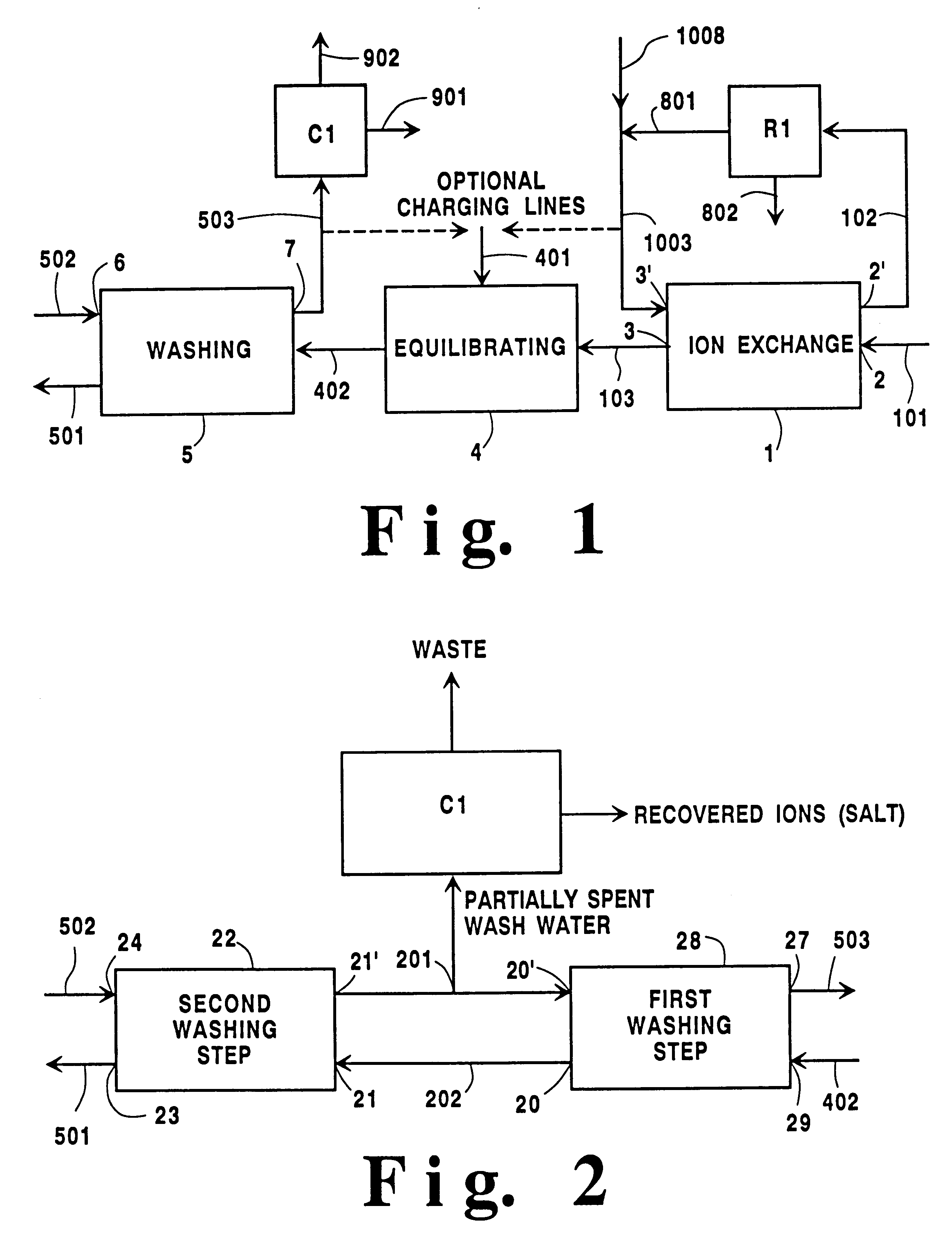Mixed cation adsorbent having substantially uniform cation distribution
- Summary
- Abstract
- Description
- Claims
- Application Information
AI Technical Summary
Benefits of technology
Problems solved by technology
Method used
Image
Examples
example 1
In this example a mixed cation lithium-containing X zeolite containing lithium and calcium at an equivalent ratio of 85:15 (and no more than 5% sodium, typically 1-3% sodium) is prepared. A sodium X zeolite would need to be treated with a feed brine with a total salt concentration of 1.7 equivalents / liter maintained at about 100.degree. C. if stoichiometric amounts of both cations were to be used.
Sodium and calcium are each more strongly selected than lithium. Sodium is about five times more strongly selected than lithium; therefore, if no calcium is present in the feed brine composition, an amount of lithium chloride of at least five times the stoichiometric ion-exchange amount would be required to overcome the unfavorable lithium-to-sodium exchange. (The stoichiometric amount referred to in the preceding sentence is the amount needed to exactly replace every untreated zeolite cation with a lithium ion as if the zeolite was to be 100% ionexchanged with lithium.) Preferably, about e...
example 2
The raw zeolite in this Example contains both potassium and sodium cations (1-70% K) instead of just the sodium cations of the zeolite utilized in Example 1. The potassium cations are typically more strongly held than sodium cations by the zeolite so that more of the lithium cation is needed to remove them (if all of the cations were to be replaced by lithium cations). For example, about 16 times the stoichiometric amount of lithium may be needed instead of only eight (in Ex. 1), so either more feed brine (double the amount used in Ex. 1) or a higher concentration of the less strongly held cation in the brine must be used.
To prepare a product zeolite with 15 equivalent percent calcium and 85 equivalent percent lithium: 16 equivalents of total salt per equivalent is needed, i.e. 9.4 liters of brine per equivalent of zeolite (since the total brine has 1.7 equivalents of total salt per liter).
As the feed brine must supply only enough calcium chloride to match the amount needed in the p...
example 3
If the product zeolite is to have cation types with the following equivalent percentages: 12% magnesium, 3% calcium, and 85% lithium, then the same lithium amount is still needed in the feed brine composition, since both magnesium and calcium are able to displace lithium from the adsorbent.
If eight equivalents of lithium cations are required per zeolite equivalent, the amounts of the magnesium and calcium cations needed are:
1) Mg: 0.12 equivalents of magnesium per equivalent of zeolite or,
0.12 / 8=0.015 equivalents of magnesium per equivalent of total salt in the brine.
2) Ca: 0.03 equivalents of calcium per equivalent of zeolite or,
0.03 / 8=0.00375 equivalents of calcium per equivalent of total salt in the brine.
PUM
| Property | Measurement | Unit |
|---|---|---|
| Distribution | aaaaa | aaaaa |
Abstract
Description
Claims
Application Information
 Login to View More
Login to View More - R&D
- Intellectual Property
- Life Sciences
- Materials
- Tech Scout
- Unparalleled Data Quality
- Higher Quality Content
- 60% Fewer Hallucinations
Browse by: Latest US Patents, China's latest patents, Technical Efficacy Thesaurus, Application Domain, Technology Topic, Popular Technical Reports.
© 2025 PatSnap. All rights reserved.Legal|Privacy policy|Modern Slavery Act Transparency Statement|Sitemap|About US| Contact US: help@patsnap.com

